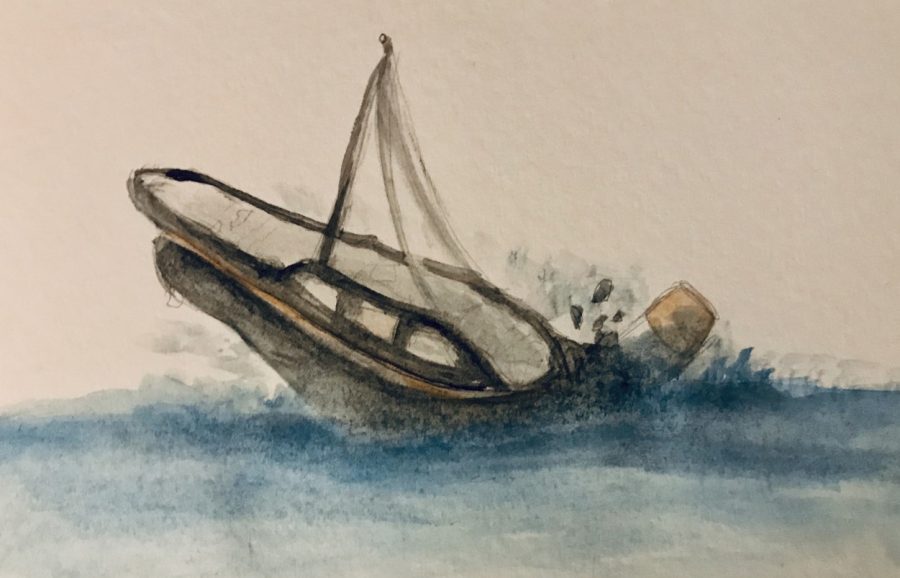Could the Titanic “Sink” Again?
There was an eerie chill in the air on the night of April 14, 1912. The Royal Mail Ship Titanic, known as an unsinkable ship, was cruising full speed ahead in a field of known icebergs. With over 2,000 people enjoying a night on the grandest ship of their time, the story that most everyone knows started to unfold. There are many theories as to how and why the events that night occurred.
One theory suggests that in the wireless telegraphing station of the ship, a message was conveyed about a known ice field in Titanic’s path. Since the ship was making great time, the operators chose to ignore that message. Another theory is that the message was answered but never made it to whom it should have been delivered.
A picture of the ship before it set sail from Southampton, England, reveals a large black gash caused by an alleged coal fire in the boiler rooms. Another theory is that this may have weakened a strip of the ship’s steel plates and iron rivets near where it was struck by a massive iceberg.
The Titanic was built by Harland and Wolff, a Belfast-based shipbuilding company, and designed by chief naval architect, Thomas Andrews, in 1911. Andrews installed 16 watertight compartments throughout the frame of the ship, so even if four were flooded, the Titanic would stay afloat. However, he dismissed the requirement of having enough lifeboats on hand, for fear they would make the deck “too cluttered.”
The Titanic was one of three sister ships along with RMS Olympic and His Majesty’s Hospital Ship Britannic (HMHS) of the White Star Line. Previously, in 1907, the rival Cunard Line released two incredibly fast ships, Lusitania and Mauretania. The White Star Line needed to up its game, so it decided to build its ships based not on speed, but on luxury.
Before the Titanic set sail, there was not much preparation to ensure the ship was sturdy. A suspected coal fire in the boiler rooms, for example, should have been inspected before the journey began. Freshman Andrew Schiller gave his opinion on what he would do if he was the captain of the Titanic, saying, “I would probably make sure that the damaged areas were in good, if not perfect, shape before sending it out.”
Nevertheless, the Titanic left Southampton on April 10, 1912, stopped to pick up more passengers and cargo in Cherbourg, France, and once more in Queenstown, Ireland, and continued its journey on to New York Harbor. From the wealthiest first-class passengers to the then-considered luckiest immigrants, everyone had a purpose for traveling on the Titanic. One hundred and seventeen years later, the only thing that may remain of their stories are the soles of their shoes on the ocean floor. The Titanic is now recognized as a resting place more than an excavation site, set two and a half miles below the surface of the Atlantic Ocean.
It took investigators decades to find the Titanic, hidden along the vast ocean floor. Like finding a needle in a haystack, it proved to be a difficult task until 1985, when Marine Geologist Robert Ballard and a team of French oceanographers located a boiler using robotic operated vehicle technology on the ocean’s floor.
Since the discovery of the Titanic, many breakthrough discoveries have occurred. Against eyewitness accounts, experts in 1912 confirmed the ship had sunk intact. Now, it has been proven that the ship had, in fact, broken in two, with the bow being instantly recognizable and the obliterated stern 600 meters away due to impact. There is still research being conducted as to when and how the ship broke, due to how debris spread across such a vast area. In 2012, one hundred years after the Titanic sank, a new expedition began to locate every missing piece of wreckage lying on the ocean floor. However, during that expedition, and years after, scientists uncovered a frightening truth: the Titanic is decaying at an unimaginable rate.
Since its sinking, millions of rust-forming bacteria are eating away at the ship, leaving behind residue that looks like an icicle. “Now, there’s more life on Titanic than there was floating on the surface,” says Lori Johnson, a frequent visitor of the wreck and a microbial ecologist. Called “rusticles,” they are by-products of the dominant bacteria down on the ocean floor. The bacteria eat away the iron, flowing down the ship with gravity. According to the BBC, “Because they eat about 180 kg (400lbs) a day, scientists have given the ship a waning life expectancy” (BBC.com). But, how long will that be?
Senior Jordana Swimmer commented, “I’d say since the ship has been down there for over one hundred years, I think it could survive another hundred more.” Shockingly, scientists estimate the Titanic could be a recognizable wreck for only twenty to fifty more years. Even some of the well-known areas of the ship are being eaten alive by these bacteria. “The captain’s bathtub is a favorite image among Titanic enthusiasts, and that’s now gone. That whole deck… on that side is collapsing, taking with it the staterooms,” says Parks Stevenson, a Titanic historian.
Although this may be saddening, there is virtually nothing scientists can do because it is a natural process by which the bacteria are feeding off the ship. However, historians and scientists alike can work to keep Titanic’s legacy alive. Special Education Teacher Ellen Restivo feels that there are methods to historically preserve the Titanic: “Definitely with written records, taking video footage of the ship, using photographs, and maybe using 3D technology to give it the full effect.”
Regardless, the Titanic will forever remain an important part of the history of our world, even after the last parts of debris slowly decay away at the ocean floor.

I am a member of the Class of 2023 and the Driftstone editor-in-chief. Along with creative writing, I enjoy spending time with family and friends, getting...

















